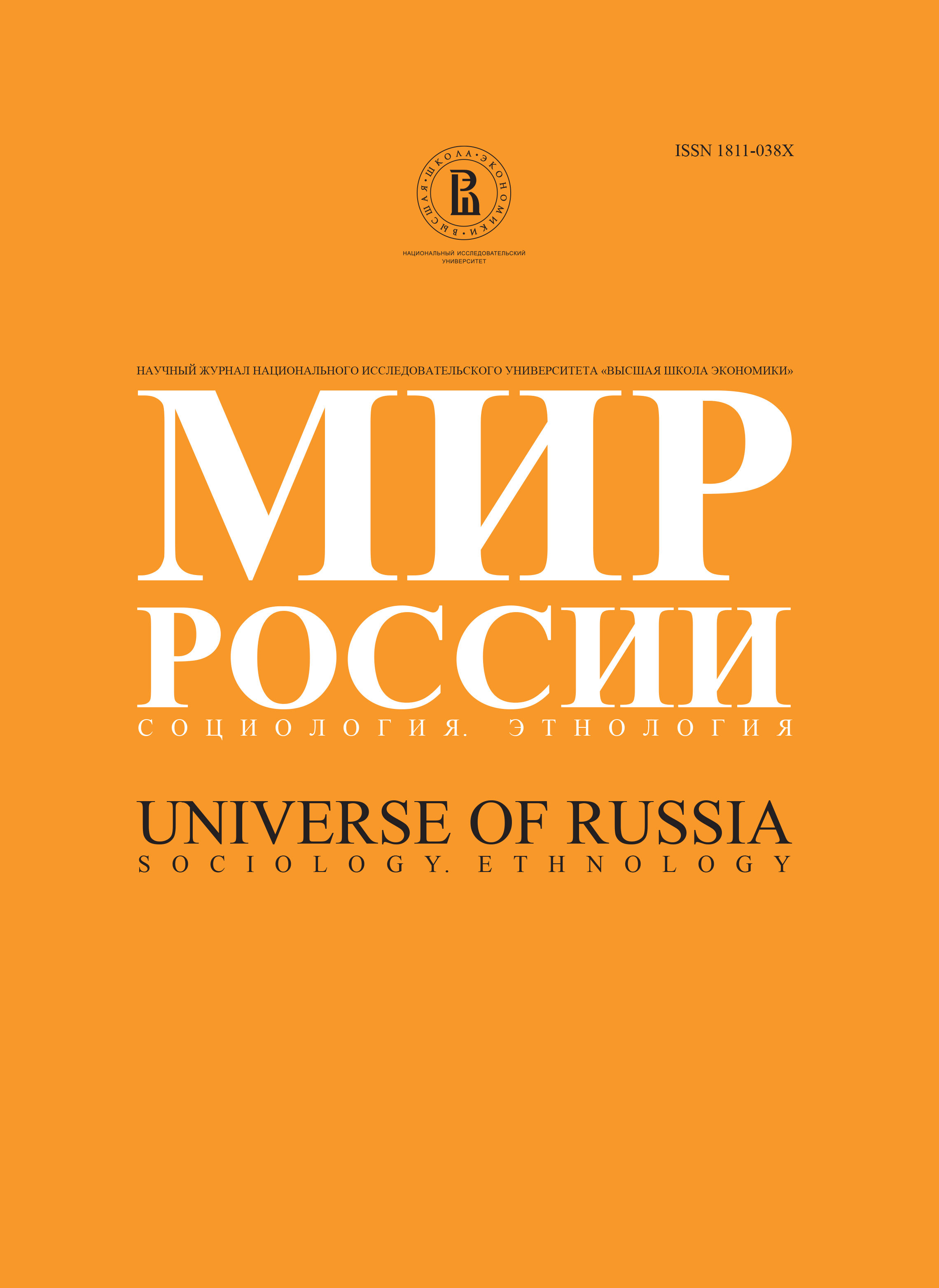Why Do We Dislike the Non-Residents?
Abstract
The system of control over the social structure, which existed in the USSR, regulated not only vertical mobility, any personnel replacements and assignments, but horizontal transitions of social groups and even separate individuals. National tensions and conflicts, which became clear by the mid 1980s, were regarded by the major, Russian, part of the population as separate local outrages, the disturbance of inter-ethnical relations, which required the immediate government interference for conviction of instigators together with extraordinary actions for settlement of consequences.On the eve of the Soviet collapse xenophobia and the problem of hostile attitude to refugees and other forced migrants wasn’t in the eye of the public. The collapse was only ahead and the picture of possible social change, as well as the following massive translocations of population, were yet rather unclear. That is why the apparent part of migration was regarded by the society primarily as a flow of migrants who became victims of national collisions, pogroms and slaughter (which took place mainly in Middle Asia or in Caucasus), or intolerant attitude of local population, which was subject to the weaknesses of soviet administration.
It is not surprising, that the absolute majority of Russians considered the government support for those entrants necessary at that time. Later on the situation began to change. The collapse of the socialist camp and then the USSR broke the structure of soviet identity and, by contrast, actualized the more primitive structures of ethnic solidarity. Since that time the subject of ethnic homogeneity in Russia becomes more evident in public utterances of those who called for eye of the public. In the situation of a growing crisis, instability and disorientation the accent over one’s own or other’s ethnicity becomes a routine expression of social and group barriers, collective privileges, rights and demands.
After somewhat suspension during the change of regimes and various lift-overs the migrant flows, being emphasized by the waves of ethnic discrimination, suppression, dissociation, economic crisis and, sometimes, total economic collapse, resumed as soon as the economic situation began to improve. People who fled to Russia were, in the first place, motivated by economic interests, problems of survival, unemployment, overpopulation and, in the last place, inter-ethnical conflicts of military activities in Caucasus. Since then forced migrants were less regarded as forced migrants, for whom it was once impossible to stay where they come from.
Although on the absolute scale the migration has been going down, the ratio of the newcomers in Russian cities has been growing constantly, i.e. their absolute number has been increasing. Against the conservative and almost non-mobile population, which got used to the system of state redistribution, the newcomers, who filled the vacancies in the fast developing service sector, municipal services, trade, small and middle business and private construction, became an apparent element of once monochromic and static urban social life. Their chances for adaptation and success were equal to those of the local population, but their stimuli were stronger. They had no hopes for social guarantees, on which relied the aborigines (in vain, because government attempted constantly to its social liabilities off).
In that situation, the migrants, being forced to familiarize with the new social niches and forms of employment, became the reason for negative attitudes: irritation, anger, frustration (especially in non-adapted part of population, which in different years of crises accounted for a third or a half of the urban population in Russia). All this overlapped with the crisis of mass identity after the collapse of the USSR. The entity of collective (Russky, Russian) consciousness during that decade could only be negatively supported.
This paper is devoted to the analysis of the numerous massive and representative all-Russian surveys, which have been carried out by the Analytical Centre of Jurii Levada since 1989. The primary subject of this analysis is represented by the growth of xenophobia in the post-Soviet Russia in connection with the real and imaginative flow of migrants.






